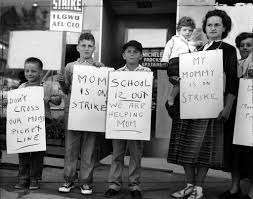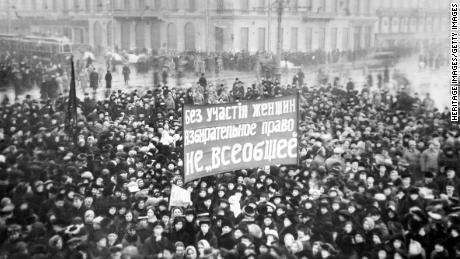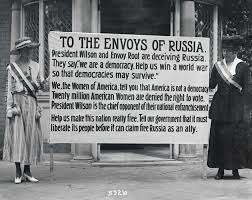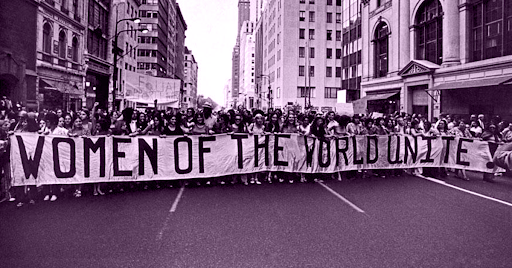Ask any average person on the street, “What’s the point of International Women’s Day?”, and you are bound to receive a whole spectrum of answers and a few questions. Social media of course makes this possible without having to leave your couch, let’s just say my average person came off the digital street.
Why do women and children get their own days and not the men? Isn’t Women’s Day mostly about reminding the world how women are kicking ass at all those jobs that men once thought only they could be successful at? How does one observe or celebrate a Women’s Day? I suppose the day is meant for men and boys to observe and for women and girls to celebrate their own accomplishments, by delivering speeches on how men should treat them better. Our Women’s Day celebration at the workplace involves women colleagues coordinating with each other what to wear while the male colleagues bring in cake and cards to the office to show their support and we take some pictures that go on to our online social networks. That’s the ritual and expectation.
Has Women’s Day lost its oomph, its messaging or both? The most egregious perception about Women’s Day is that it’s merely a women’s appreciation day. We spend the day thanking women for who they are, for what they endure and despite any unfairness and injustice towards them, for not letting her family, her work, or her culture down. Now, not that there’s anything inherently wrong with any of that, God knows she deserves all the kindness and encouragement she can get but there’s an insidiousness ensconced in that passive hands-off approach. It’s a tacit approval of the status quo of her condition, the absence of acknowledgement that actions remain to be taken so she has less to endure, that she receives fairness, feels safe, respected and valued for who she really is yearning to become. If we don’t grant her that safe space to voice herself without fear of judgment or a backlash to her character and dignity, we as a society would be failing her and in turn ourselves. Sans the awareness, understanding, activism and action-projects, only misinformation remains. Uncorrected, it enters collective consciousness and becomes fact. Women’s Day is beyond sweet appreciation, it is a day to recommit to keep the spirit of women’s struggle alive. Seeds for the first Women’s Day were sown out of existential necessity carrying deep revolutionary roots at a time when women’s rights were viewed as radical ideology.

American socialist and feminist Charlotte Perkins Gilman addressed a New York crowd, saying : “It is true that a woman’s duty is centered in her home and motherhood but a home should mean the whole country and not be confined to 3 or 4 rooms of a city or a state.” At the time, women still couldn’t vote. Pictured here is a woman and mother with her children. Image Source and Credit : The Kheel Center
The radical origins stem from a year-long period of ongoing protests, strikes and rallies constituting women garment workers in New York City. Their grievances – lower working wages, longer working hours compared to their male counterparts, sexual harassment, oppressive, exploitative practices, harrowing working conditions, and last but by no certain means least, women’s voting rights.
After more than a year of ongoing protests, at the suggestion of the activist Theresa Malkiel, the Socialist Party of America helped celebrate for the first time a National Woman’s Day on February 28, 1909, in honor of the anniversary of the striking women workers. Clara Zetkin, a distinguished member of the German Socialist Party, at the international conference of socialist organizations proposed that an International Women’s Day be established for advocating universal suffrage while using the day to mark the strike of the US garment workers. So, on March 19, 1911, International Women’s Day was commemorated for the first time in Europe. What was just two short years earlier, a local city-protest made up entirely of women garment workers, had now taken the world’s center stage with over a million women and men taking part in rallies across Europe. Two years later, Russia followed, establishing its International Women’s Day in 1913.
It is however the two ensuing events that are considered the most consequential. They are also deemed historic for the impetus they served in propelling Women’s Day into a global movement further solidifying its cause, purpose and power. The first was the Triangle Shirtwaist Factory Fire.
On March 25, 1911, in New York City, a fire broke out in the 10-story Asch building. The Triangle Shirtwaist Factory occupied the eighth, ninth and tenth stories. These were overcrowded with workers, mostly women and young girls working late and long hours and had no fire extinguishers in the building. The fire engines that arrived had ladders that stretched up to only six floors. While those on the eighth floor used the stairwell and those on the tenth floor used the roof to escape to the top of the building from where NYU students helped with ladders stretched across buildings, it was too late for the occupants on the ninth floor. The single fire-escape available had given way from the weight of the desperate many using it while the elevators had stopped working by then. The ninth floor had only two doors leading out and these doors had been locked by their managers from the outside to prevent unauthorized bathroom breaks blocking their final escape route.
All executives and management had been the first to safely exit the building leaving behind the women and children inside the burning building some of whom jumped nine floors onto the street unable to bear the searing heat of the flames and choking from inhaling the toxic smoke. Ultimately the tragedy had claimed 146 lives out of which 6 badly charred bodies remained unidentified until the year 2011. The average age of the victims, 21. A workplace needs to be safe regardless of whether it is a man’s, woman’s, or child’s life at stake.

Pictures from the Triangle Shirtwaist Factory fire. Image Source and Credit : The New York Public Library Digital Collections
It just turned out that the workers in that building on that floor were women and any grievance from those quarters was perceived as a demand for rights, and women’s rights in the early American 1900s were non-existent. The shock from the tragedy reverberated far, far beyond New York City and the belief that it is incumbent upon women to take care of their rights for safer working conditions, along with those for their children’s lives gathered more support with the labor unions and movements.
Many of the women passionate in showing their dissatisfaction against the implemented rationing system were able to actively recruit 50,000 other female workers from the other plants. These protests started to swell over the next two days and when both men and women workers from Putilov, the largest industrial plant in the then Capital Petrograd joined the International Women’s Day protesters demanding bread, better rights and an end to autocracy, they turned into a 250,000 strong protesting strikers despite gatherings being forbidden on the streets. A week later, the 300-year-old Russian Empire (Romanov Dynasty) collapsed paving the way for socialism and the formation of the Soviet Union in 1922. The effects of the March protests didn’t end with the fall of autocracy. Russian women demanded and gained their right to vote also in the same year 1917 after 40,000 women and men took to the streets demanding universal suffrage making Russia the first major power to enact suffrage legislation for women. A year later Britain followed but it took the United States another three years. In that period, counterparts across all those countries found inspiration, support and examples to follow, promote and work towards common causes finding international connection in women’s movements, be it suffrage or labor rights. Their accomplishments and contributions weren’t limited to just those fields and causes either. Women were on fire and the world became a more equal and better place because of that.

Women’s Day Demonstration in Petrograd on March 8, 1917 that spurred the Russian Revolution. Image Source and Credit : Gettys Images
The other event of consequence occurred on the International Women’s Day of 1917 in Russia, March 8. (Readers to note here the significance of the date of commemoration from where today’s Women’s Day gets its date). Tens of thousands of women had turned out for the day. Exhausted by war and widespread food shortages they came out with banners for change which read: “Feed the children of the defenders of the motherland” and another one that said: “Supplement the ration of soldiers’ families, defenders of freedom and the people’s peace”.
The male revolutionaries did not like these women’s day protesters since they had planned a larger organized turnout for the Annual May 1 Workers protests. In fact, they referred to these women’s day protesters as
disobedient, misbehaving women, but these women were not going to be turned away or be silenced as they were the caretakers for their families and children at home. In the morning, it was peasant women, some ladies from the society, and student girls that made up the protests. By the afternoon, female textile workers came out of work to join them, demanding bread for their families and children, the male workers hadn’t joined them yet at that point. This was still women shouting for bread also referred to as bread riots.
Many of the women passionate in showing their dissatisfaction against the implemented rationing system were able to actively recruit 50,000 other female workers from the other plants. These protests started to swell over the next two days and when both men and women workers from Putilov, the largest industrial plant in the then Capital Petrograd, joined the International Women’s Day protesters demanding bread, better rights and an end to autocracy, they turned into a 250,000 strong protesting strikers despite gatherings being forbidden on the streets.
A week later, the 300-year-old Russian Empire (Romanov Dynasty) collapsed paving the way for socialism and the formation of the Soviet Union in 1922. The effects of the March protests didn’t end with the fall of autocracy. Russian women demanded and gained their right to vote also in the same year 1917 after 40,000 women and men took to the streets demanding universal suffrage making Russia the first major power to enact suffrage legislation for women. A year later Britain followed but it took the United States another three years. In that period, counterparts across all those countries found inspiration, support and examples to follow, promote and work towards common causes finding international connection in women’s movements, be it suffrage or labor rights.

These two suffragettes carried their banner to the U.S White House gate on June 22, 1917. The message indicts the then U.S President, Woodrow Wilson. The words ‘free Russia’ refer to the Women’s voting rights introduced by the provisional regime that had overthrown the Czar in March. Image Source and Credit : Bettmann Bettmann Archive
Their accomplishments and contributions weren’t limited to just those fields and causes either. Women were on fire and the world became a more equal and better place because of that.
The United Nations officially recognized International Women’s Day in 1975. What took them so long, is largely due to the political associations to the Soviet Union / socialism during the era of cold war tensions. It’s the exact same reason why international women’s day is acknowledged by the United States, but not celebrated in any significant fashion in spite of being home to its birth.

An International Women’s Day rally. Image Source and Credit : Brynmawr
Ronald Reagan’s words on freedom struggle also ring true for women’s struggle. ‘Freedom is never more than one generation away from extinction. We didn’t pass it to our children in the bloodstream. It must be fought for, protected, and handed on for them to do the same, or one day we will spend our sunset years telling our children and our children’s children what it was once like in the United States where men were free.’ Those words are turning out to be prophetic with Russia in general and Russian women in particular who are suffering great setbacks to the very rights they fought so hard for.
In today’s globally connected digital world, there always is a price to be paid by everyone, for both our actions and inactions. It’s imperative to educate ourselves and not be affected by false, misleading, divisive, hateful disinformation. Women’s Day does not belong to any one woman, man, organization or country but to the combined, consistent efforts of all who care about human freedoms and rights – Protecting this day and its spirit of struggle, is up to us, all of us, together.






